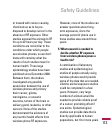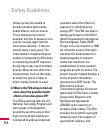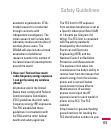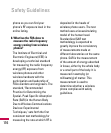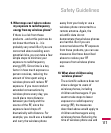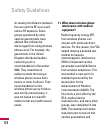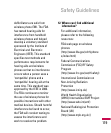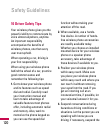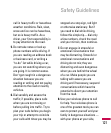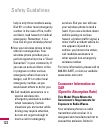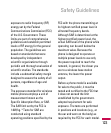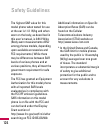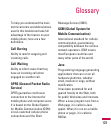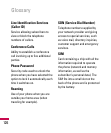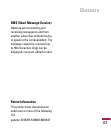
121
Safety Guidelines
call in heavy traffic or hazardous
weather conditions. Rain, sleet,
snow and ice can be hazardous,
but so is heavy traffic. As a
driver, your first responsibility is
to pay attention to the road.
5. Do not take notes or look up
phone numbers while driving. If
you are reading an address book
or business card, or writing a
“to-do” list while driving a car,
you are not watching where you
are going. It is common sense.
Don’t get caught in a dangerous
situation because you are
reading or writing and not paying
attention to the road or nearby
vehicles.
6. Dial sensibly and assess the
traffic; if possible, place calls
when you are not moving or
before pulling into traffic. Try to
plan your calls before you begin
your trip or attempt to coincide
your calls with times you may be
stopped at a stop sign, red light
or otherwise stationary. But if
you need to dial while driving,
follow this simple tip— dial only
a few numbers, check the road
and your mirrors, then continue.
7. Do not engage in stressful or
emotional conversations that
may be distracting. Stressful or
emotional conversations and
driving do not mix; they are
distracting and even dangerous
when you are behind the wheel
of a car. Make people you are
talking with aware you are
driving and if necessary, suspend
conversations which have the
potential to divert your attention
from the road.
8. Use your wireless phone to call
for help. Your wireless phone is
one of the greatest tools you can
own to protect yourself and your
family in dangerous situations —
with your phone at your side,



